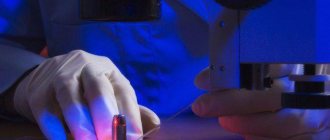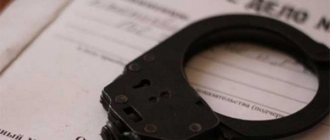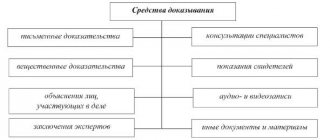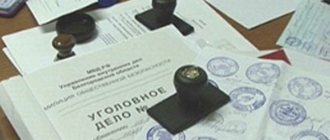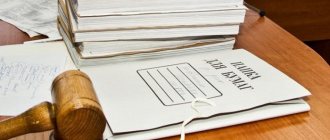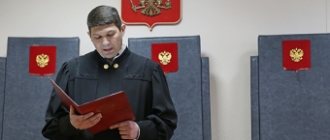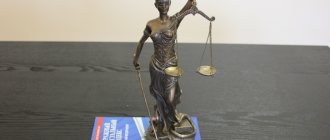Falsification of evidence in civil proceedings is a criminal offense and is prosecuted under Art. 303 of the Criminal Code of the Russian Federation. Dear readers! To solve your specific problem, call the hotline or visit the website. It's free. 8 (800) 350-31-84
Citizens protecting their own interests in court is a common way to prove the legitimacy of their position. Every year, courts consider more than 10 million such cases. But often in civil proceedings, individuals resort to illegal means to prove their position in order to obtain a favorable court decision.
Types of falsified evidence in a civil case
In civil cases, there are two types of falsification of documents:
- The first type is changing some data.
This type includes forgery of signatures and seals. This type also requires additional printing of some paragraphs or changing the meaning of the text. For example, when providing a certificate from the hospital, it contained incorrect information about the disease. Or, during testimony, the witness specifically changed some data so that the defendant avoids punishment. - The second type is distortion of all data.
This includes substitution of part or all of the evidence. For example, an attacker can write the text of documents with evidence on his own, inventing data or taking information from unverified sources in order to protect the criminal from punishment. This type of falsification also involves planting completely new evidence at the crime scene, which includes biomaterial, a weapon, and traces of shoes or a vehicle.
All these actions slow down the judicial process. Attention shifts from the main criminal to finding the right information.
If falsification is established, the evidence loses its force, which entails:
- resuming the collection of new evidence;
- making a decision based on the evidence that already exists, without searching for new ones.
Marks made without malicious intent or through carelessness are not falsification of evidence.
Forgery of physical evidence
When considering civil disputes, such evidence includes objects and items that, by appearance and properties, can be intended as a means of determining circumstances that make sense for the case. The offender gives the physical evidence the following appearance and location:
- Moves in space
- Change the internal structure
They can interfere with the establishment of the truth, for example: by diluting champagne in order to convince judges that a businessman was selling wine of inadequate quality. In turn, the Russian Criminal Procedure Code named among the material evidence in civil disputes the following items:
- Being an instrument of crime or having retained imprints on them
- Have been the subject of criminal acts
- Capital and other valuables acquired by criminal means
- Other things that serve as evidence for solving a crime
How is falsification detected and proven?
Everyone involved in the investigation of a crime must verify the authenticity of the evidence and the accuracy of the information entered in the documents. The specialist should pay special attention to the following points:
- Inconsistency of information.
This is clarified by interviewing witnesses and further comparing the information received with that which was previously included in the documents. - Clear signs of falsification.
They can be noticed, for example, in a passport in the form of abrasions on the date or place of registration. Or in a document where a worn or leaking seal is found, as well as obvious signs of reprinting of the text. - Forgery of handwriting.
If a specialist has questions on this issue, he should conduct a comparative analysis of the handwriting of the signature from the received document with other examples.
A person participating in the investigation, in case of doubt, may resort to the services of an expert group to obtain complete information about the evidence. For example, specialists will help you compare handwriting, since without their knowledge and equipment it will be difficult in some cases.
Composition of the offense
Assessing the objective side of falsifying evidence is a very problematic factor from the point of view of the corpus delicti. Submission: falsification (substitution) in the Law of Ukraine, as well as in the directive decisions of the Plenum of the Main Court, is not detected.
The Judicial Collegium of the General Court explained that falsification of evidence should be understood as any distortion and forgery of the essence of the case.
Assessing evidence affecting a thorough and impartial consideration of disputes and the essence of litigation.
Substitution of written evidence and information:
- All kinds of agreements fixing mutual obligations
- In registers, acts of acceptance of goods, results of work performed
- Accidents
Substitution may be considered a consequence of entering false information into documents. Regarding the substitution of written evidence and documentation, it does not matter at all whether the contents of the original document or its photocopy are false, whether it was received by facsimile postal delivery or electronically.
Responsibility and punishment for falsifying evidence
After a thorough investigation (if facts of falsification of evidence have been established), an investigation follows to establish the criminal person and motives.
When studying the legal side of the issue, keep in mind that the motive of the act does not matter. It also does not matter whether the judge accepted the forged documents or ignored them. The main thing remains the fact of falsification.
Often, document forgery is carried out by persons who have unlimited access to them. They are the ones who know all the ways to falsify information in order to achieve the desired result. Such actions can be provoked by various motives, among which are often:
- big bribes;
- the defendant’s desire to divert suspicion to another person;
- deliberately delaying the proceedings.
A person or group of persons involved in tampering with evidence is subject to one of the following penalties:
- Fine.
Often, for falsifying evidence, especially if the actions of the criminal were aimed at a citizen not involved in the crime, a penalty will be applied in the form of an administrative fine from 100,000 to 300,000 rubles. The amount of payments is calculated for each person individually, based on his earnings over a couple of years. - Forced labor.
A person accused of tampering with evidence may be sentenced to mandatory community service, the duration of which is 480 hours. - Detention.
Usually the accused is imprisoned for three years. However, at the discretion of the judge, the period can be extended to five years.
If imprisonment is imposed on a civil servant, then in addition to the term he is deprived of his position and prohibited from further practicing.
The terms are the same as for imprisonment - from three to five years. Punishment for falsification of evidence is not provided for those persons who provided incorrect data, but knew nothing about the forgery and considered the document to be genuine.
Punishments for falsification are prescribed in the “Criminal Code of the Russian Federation” in Article 303, part No. 1.
Forgery of documentation
Falsifications related to papers include:
- Falsification of the contents of protocols, inventories, decisions, documentation drawn up by employees of the traffic police, tax inspectorate, customs
- Concealment of part of the conclusion or the entire content issued by experts
- Substitution of the interrogation protocol by the investigator or other person, falsification of the testimony of the victim
However, when:
- The witness (victim) deliberately gives false testimony
- Translator - deliberately incorrect translation
- Specialist - deliberately incorrect conclusion
Then responsibility for one’s actions is imposed by the court, in accordance with established legislation and penalties.
Allegation of falsification of evidence
If evidence has been tampered with, file a statement. There are two ways to submit this document:
- Submitting an application during the process.
A person can submit such a document in a courtroom. It is drawn up in writing before the hearing (however, the court also allows an oral statement). The document must indicate that the applicant requires the involvement of an expert group to investigate the falsification. Remember that such services are paid, that is, the applicant himself pays for the work of the experts. If falsification of evidence is established, the money can be returned. It is also worth remembering that the statement must be included in the protocol. - File a complaint with the police.
The paper is taken to the station, which is located in the area where the court hearing the case is located. This method can be used only if the court has not found falsification, and the applicant is firmly convinced of the opposite.
Who can apply and when?
Any person participating in the trial who suspects falsification can submit an application.
As mentioned above, a crime can be reported at a hearing. If the falsification is discovered after the judge’s decision in the case under consideration, the application can be sent to the court. But proving a fake is problematic. It is better to submit a petition as early as possible in order to quickly convict the criminal and not delay the process.
How to make an application correctly?
Take your application seriously and include all the necessary information to avoid denial of consideration. The paper is filled out as follows:
- The first stage is to create the “header” of the document.
As a standard, information is written in the upper right corner. The first line indicates the institution where the application is sent (court or police station). Next, on the second line, standard information about the applicant is entered: last name, first name, patronymic and place of residence. The third line indicates the number of the case under consideration, in which forgery is suspected, and the full names of the defendant and plaintiff. - Stage two – description of the facts of the crime.
Next, briefly but succinctly state the facts of the offense, namely write what evidence is falsified. It is better to refer to the legislative framework regarding false evidence. - Stage three – conclusion.
It contains a request for the recognition and exclusion of falsified evidence. - Stage four – applications.
This includes a list of documentation attached to the application, if any. - Stage five – signature and date.
At the end of the form, the date of compilation of the paper and the signature of the applicant are indicated.
If the application is sent to the court, two copies will be required. The first copy is sent to the judge. As for the second copy, the court office stamps it and returns it to the applicant.
sample application for falsification of evidence in .doc format (Word)
Procedure for consideration of the application
Within ten days after filing the application, the court appoints an examination. It can be either handwriting or forensic technical. The choice depends on the type of forgery. If the crime was discovered and confirmed, then the falsified evidence will be removed from the case.
Differences or illusions
A false document will affect the course of the trial.
It will be a mistake to believe that a false document will in no way affect the decision of the judges, and the elements of the offense itself will not be revealed.
This is far from true. Because before the decision was made, from the moment the falsification was filed, the criminal act itself had already been committed. But whether it will affect the court verdict or not is unimportant, except in the context of the fact of the consequences, the cause of which was the given offense.
To qualify a crime, it is extremely important that the offender himself, who wants to commit this illegal act, understands and comprehends the nature of his actions. Sometimes, if falsified data is presented to the court by a representative of the offender who does not know the nature of the origin of the falsification, then he has no intention of misleading the court.
When this is done, for example, by a translator, an eyewitness, an expert, then their criminal actions will be reclassified under a different sanction of the Criminal Code - Art. No. 307.
